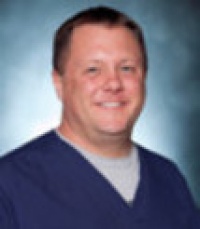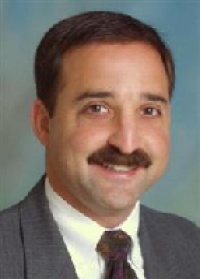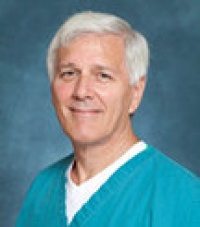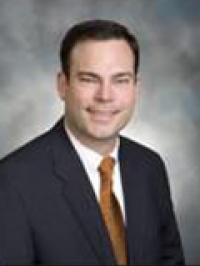
Dr. Susan Landers, MD, FAAP, FABM
Neonatal-Perinatal Medicine Specialist | Neonatal-Perinatal Medicine
2704 Westlake Dr Austin TX, 78746About
Dr. Landers received a Bachelor's Degrees in Biology and Chemistry from Auburn University and attended medical school at the Medical University of South Carolina in Charleston. Dr. Landers completed her pediatrics residency at the Universisty of Texas Southwestern Medical School, Dallas Chidren's Hospital, and Parkland General Hospital in Dallas, and her neonatology fellowship at the Baylor College of Medicine and Texas Children's Hospital in Houston.
Education and Training
Medical University of South Carolina College of Medicine 1977
Board Certification
Neonatal-Perinatal Medicine (Pediatrics)
PediatricsAmerican Board of PediatricsABP- Neonatal-Perinatal Medicine
Provider Details
Awards
- Alpha Omega Alpha 1977 Medical University of South Carolina
Professional Memberships
- Academy of Breastfeeding Medicine
- The American Academy of Pediatrics
Fellowships
- She completed her neonatology fellowship at the Baylor College of Medicine and Texas Children's Hospital in Houston, Texas.
Professional Society Memberships
- American Academy of Pediatrics, Academy of Breastfeeding Medicine
Articles and Publications
- Book: "So Many Babies: My Life Balancing a Busy Medical Career and Motherhood" 2021. Morgan James Publishers.Articles:1. S. Landers, P.L.Berry, G.L. Kearns, S.L. Kaplan, A.J. Rudolph. "Gentamicin disposition andeffect on development of renal function in the very low birth weight infant". Dev. Pharm.Ther. 1984;7:285-302.2. S. Landers, T.N. Hansen. "Transcutaneous oxygen monitoring in neonates". Perinatol.-Neonatol. 1984;8:39-47.3. S. Landers, A.J. Corbet, A.J. Rudolph. "Influence of theophylline and caffeine on surfactantproduction and release in fetal rabbits". Am. Rev. Resp. Dis. 1984;130:204-208.4. T.N. Hansen, A.L. Gest, S. Landers. "Inspiratory airway obstruction and lung fluid balance innewborn lambs". J. Appl. Physiol. 1985;58(4):1314-1318.5. S. Landers, T.N. Hansen, A.J.S. Corbet. "Optimal constant positive airway pressureassessed by aADC02 in hyaline membrane disease". Pediatr. Res. 1986;20:884-899.6. S. Landers, A. Moise, K. Fraley, O.E. Smith, C.J. Baker. "Factors Associated with Risk forumbilical-catheter related sepsis in neonates". Am. J. Dis. Child. 1991;145:675-680.7. G.L. Freed, S. Landers, R.J. Schanler. "A practical guide to successful breastfeedingmanagement". Am. J. Dis. Child. 1991;145:917-921.8. R. Snider, S. Landers, M. Levy. "The ringworm riddle- An outbreak of Microsporum canis inthe nursery". J. Pediatr. Infec. Dis., 1993;12:145-148.9. J. Seguin, M.A. Fletcher, S. Landers, D.R. Brown. "Umbilical Venous Catheterizations: Anaudit by the SGCPC". Am. J. Perinatol. 1994;11:67-70.10. M.A. Fletcher, D.R. Brown, S. Landers, J. Seguin. "Umbilical arterial catheter use: Report ofan audit conducted by the Study Group for Complications of Perinatal Care". Am. J.Perinatol. 1994;11:94-99.11. L. Margraf, S. Landers, C. Langston, A. Reiter, R. Carpenter, and C. Fowler. "Successfulprenatal therapy of thoracic lesions". Pediatr. Path.1993;13:613-620.12. S. Landers, B. Harvey, R. Kirby, C. Langston. "Characteristics of infants who undergoneonatal autopsy". J. Perinatol. 1994;14:204-207.13. G.E. Schutze and S. Landers: "The Management of Infants born to Mothers with sexuallytransmitted diseases". Am. Fam. Phys., 1994:50(7):1479-1486.14. Landers, R.S. Kirby, T. Miller, T.J. Green, R.W. Arrington. Survival and morbidity rates forvery low birth weight infants in Arkansas. J. AR. Med. Soc. 1994;91(7):318-322.15. S. Landers, T. MacPherson. "Prevalence of the neonatal autopsy: A report of the StudyGroup for Complications of Perinatal Care". Pediatr. Path., 1995;15:539-545.16. J.D. Phillips, G. Ware, S.P. Christensen, S. Landers, R.S. Kirby. Ocular morbidity in very lowbirth weight infants with intraventricular hemorrhage. Am. J. Ophthal., 1997;123:218-223.17. S. Landers. Maximizing the benefits of human milk feedings for the preterm infantPediatric Annals. 2003: 32(5): 298-306.18. J. York, S. Landers, R.S. Kirby, P.G. Arbogast, J.S. Penn. Arterial oxygen fluctuation andretinopathy of Prematurity in very-low-birth-weight infants. J. Perinatol. 2004; 24: 82-87.19. Mazza F, Kitchens J, Akin M, Elliott B, Fowler D, Henry E, Landers S, Nix M, Ourston S,Sheppard C, Stallings D, Weihs D. The road to zero preventable birth injuries.Jt CommJ Qual Patient Saf. 2008; 34(4):201-5.20. Reisner DP, Landers S. Collaboration between obstetricians and neonatologists:Perinatal safety programs and improved clinical outcomes. Clin Perinatol. 2010;37(1):179-88.21. Landers S, Updegrove K. Bacteriological screening of donor human milk before andafter Holder pasteurization. Breastfeed Med. 2010;5(3):117-21.22. Landers, S. Breastfeeding is a physician's responsibility. Breastfeed Med. 2010;Oct;5(5):237-9.23. AAP Section on Breastfeeding Executive Committee, Schanler RJ, Feldman-Winter L,Landers S, Noble L, Szucs KA, Viehmann L. Concerns with early universal ironsupplementation of breastfeeding infants. Pediatr. 2011 Apr;127(4): e1097.24. Feldman-Winter L, Schanler RJ, Eidelman A, Landers S, Noble L, Szucs K, Viehmann L.Tracking exclusive breastmilk feedings as a measure of hospital quality. Pediatr,2011;25. Policy Statement: Breastfeeding and the Use of Human Milk, Section on BreastfeedingPediatr. 2012; 129:3 e827-e841; published ahead of print February 27, 2012,doi:10.1542/peds.2011-355226. Donor Human Milk Banking and the Emergence of Milk Sharing Landers S, HartmannBT. Pediatric Clinics 2013; 60 (1): 247-260.27. Donor Human Milk for the High-Risk Infant: Preparation, Safety, and Usage Options inthe United States. Committee on Nutrition; Section on Breastfeeding; Committee onFetus and Newborn. Pediatr. 2017; 39(1): eds.2016-3440.
What do you attribute your success to?
- resilience, persistence and a growth mindset
Areas of research
- Donor human milk in the NICU, breastfeeding support in the NICU
Favorite professional publications
- The Journal of Pediatrics, Breastfeeding Medicine
Dr. Susan Landers, MD, FAAP, FABM's Practice location
Dr. Susan Landers, MD, FAAP, FABM's reviews
Write ReviewRecommended Articles
- Fibromyalgia Treatment: What are the Alternatives?
Fibromyalgia is a chronic health condition characterized by widespread pain and fatigue. Other symptoms include sleep disturbances, memory problems, sensitivity to touch, depression, overactive bladder, and irritable bowel syndrome. The pain, chronic tiredness, and other symptoms can have a major...
- What Is a Pediatric Stroke: Get the Facts
Contrary to what many people think, strokes can also occur in children, unborn babies, or infants. There are two age classifications for pediatric stroke, namely, perinatal and childhood. Childhood stroke affects infants up to 18 year-olds. Perinatal stroke refers to the last 18 weeks of gestation...
- Different Types of Physicians Explained
Doctors or physicians are categorized according to different factors including medical specialties and subspecialties. Most doctors specialize in a specific area of medicine. This article provides a summary of the different types of doctors in the medical field. AllergistsAllergists are also...
- What is Fetal Alcohol Syndrome?
Fetal alcohol syndrome refers to the birth defects that result from exposure to alcohol during pregnancy. Excessive consumption of alcohol during pregnancy may result in the child developing physical deformities, mental conditions, behavioral issues, and learning disorders. The symptoms of fetal...
- Chlamydia in Women
What Is Chlamydia?Chlamydia is considered to be the most common sexually transmitted disease in the U.S. The disease is more commonly found in women than in men. It is an infection mainly caused by the bacteria known as Chlamydia trachomatis. Chlamydia is similar to gonorrhea, having a similar...
- What Are Fraternal Twins?
Fraternal twins definitionFraternal twins are commonly known as "non-identical twins" and can be simply defined as siblings who share the same womb but with different amniotic sacs and placentas. Biologically, they are said to be "dizygotic" meaning two different sperm cells fertilized two...
Nearby Providers
- Dr. Michael John Christ M.D.601 East 15th Street Austin TX 78701
- Dr. Mitchell Dongjun Imm M.D.10647 Bramblecrest Dr Austin TX 78726
- Dr. Jon Mazursky M.D.1015 E 32nd St Austin TX 78705
- Dr. Cynthia Jene Lynn M.D.1015 E 32nd St Austin TX 78705
- Dr. William Harold Hyde M.D.4900 Mueller Blvd Austin TX 78723
- Dr. Eric Schultz D.O.5656 BEE CAVES RD AUSTIN TX 78746











